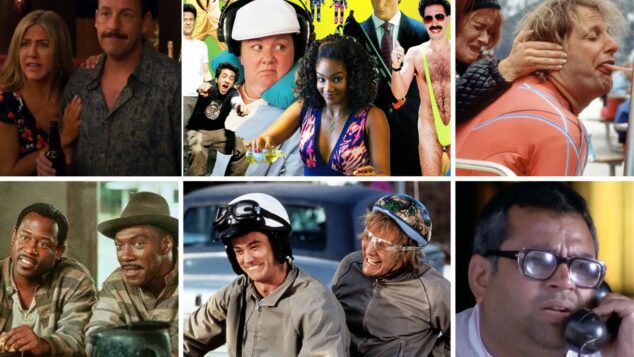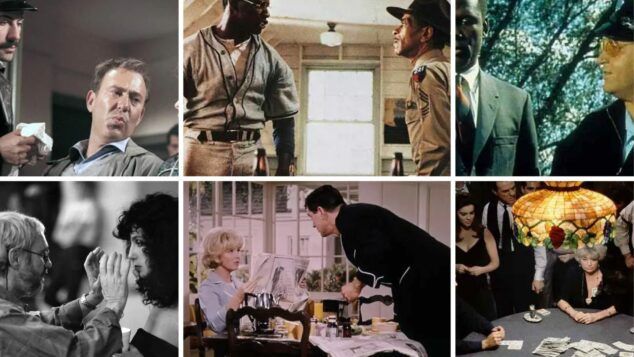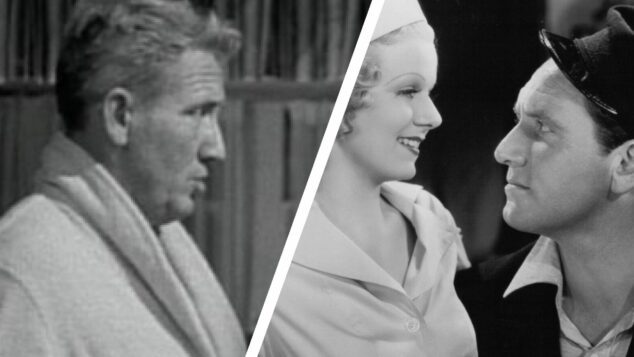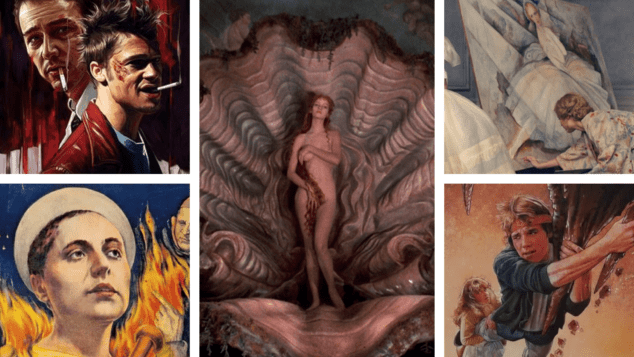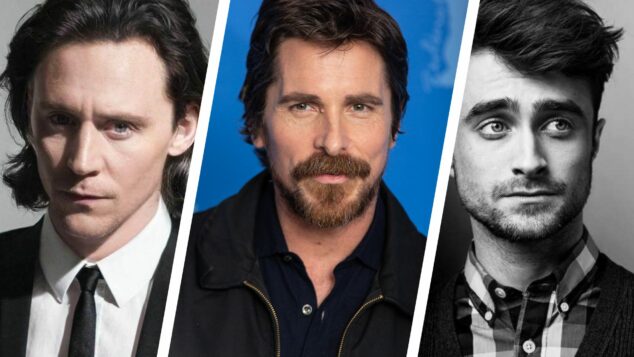Training montages are a staple of many films, especially action films. In a training montage, the main character is being trained by an instructor or character.
The training montage may be used simply as an extension of the plot or it can be used for comedic effect.
Best Training Montage
What Are Training Montages?
A training montage is a sequence in a movie or television show that shows the protagonist learning a new skill or overcoming an obstacle.
It can be as short as two minutes or as long as half an hour, but it always involves a lot of physical activity.
Training montages are meant to give the audience insight into what the character has been up to while they were busy elsewhere in the story.
They also serve as an opportunity for the audience to see what kind of person they are before they come back into play later in the story.
The first training montages in film history were created by D.W. Griffith in his 1909 film “The Musketeers of Pig Alley.” This short film was an adaptation of a novel by Victor Hugo and featured several scenes that included scenes where various characters were learning new skills like sword fighting, riding horses and using firearms.
The most famous training montages in film history are likely those used in John Ford’s 1939 film “Stagecoach” which features Marlon Brando as “John Reid” learning how to ride horses and fight with weapons at a ranch house owned by Thomas Mitchell’s character “Curly Bill” Whitlock.
This type of training montage was also used in other films such as “Top Gun,” “The Matrix” and even Batman Begins.”
What Is The Best Training Montage In Film?
In the world of filmmaking, there are many different types of training montages. The most common is the “where are we now” cut that comes at the end of a film to show how far the main character has come or how much has changed in his life.
This type of montage is usually used as a way of tying up loose ends and showing how far a character has come from where he was at the beginning of the film.
However, there are other types of training montages that can be found in films. Some examples include:
A personal montage that shows how one character has grown throughout their life and what they have learned about themselves along the way.
A montage that shows how one person or group has changed over time through their experiences, lessons learned and lessons unlearned.
A montage that shows how one person or group has overcome obstacles or challenges along their journey in life by facing them head-on and overcoming them through strength, perseverance and hard work.
15. Armageddon (1998)
Armageddon (1998) is a disaster film directed by Michael Bay and starring Bruce Willis, Liv Tyler, Ben Affleck, Billy Bob Thornton, Samuel L. Jackson and Danny Glover. It was the first film produced by New Line Cinema for Warner Bros. after the two companies’ 1992 merger.
The film was released in the United States on May 12, 1998. It received generally negative reviews from critics and performed poorly at the box office in comparison to other films in its genre, but it has gained a cult following over time.
According to Rotten Tomatoes, it received an approval rating of 20%, based on 100 reviews with an average rating of 4/10 and the site’s consensus being: “Armageddon makes no sense in terms of story or characters, but then again neither did Steven Spielberg’s original movie.”
14. The Empire Strikes Back (1980)
The Empire Strikes Back is an American epic space opera film written and directed by Irvin Kershner. Based on the novel of the same name by George Lucas, it is the second film in the original Star Wars trilogy as well as the most successful and critically acclaimed sequel.
A sequel to Star Wars (1977), it was produced by Howard Kazanjian for Lucasfilm Ltd. It was shot from January to April 1980 at Elstree Studios and on locations around Britain. It was inspired by John Milius’s 1978 short film Dune, which was later expanded into a novel; the film used extensive computer-generated imagery, with models created by Ken Smith, Richard Taylor,
Paul Huston, and John Stears. The film also features musical score by John Williams and sound effects by Ben Burtt.
Empire Strikes Back opened in North America on May 21, 1980, ending decades of box office competition between The Lord of the Rings: The Return of the King (1980) and Superman (1978). In its first weekend of release it grossed more than any film in history up until that point excluding inflation adjusted figures—$853 million in its opening
13. Never Back Down (2008)
Jeff Wadlow’s Never Back Down is a film that is the result of a filmmaker who has worked hard and has paid his dues, but who still hasn’t made it. In other words, Wadlow is a talented guy who is capable of making great films, but he has yet to do it.
Never Back Down is an action-drama based on the life of John Castellanos (Omar Epps), a high school wrestling coach who also happens to be one of the best wrestlers in the country. When one of his students gets into trouble with the law, Castellanos takes on his own son as a replacement for the troubled teen so that he can make it to nationals without missing any time from school.
The story itself isn’t very original (it’s basically an updated version of Rocky or Raging Bull), but Wadlow does manage to make it interesting by incorporating many elements from real life into his script – including interviews with former champion wrestlers and friends of Castellanos’ who were there during those moments in time when they were at their best.
Wadlow also has some interesting ideas about how teenagers think when they’re being exposed to danger for the first time – which
12. Cool Runnings (1993)
Cool Runnings is the name of the 1993 film about a Jamaican bobsled team’s attempt to compete in the Winter Olympics. The movie was directed by Jon Turteltaub and stars John Candy, Jim Brown, and Emilio Estevez.
The movie was based on the true story of the 1988 Winter Olympics in Calgary. The Jamaican team was coached by Herb Brooks (played by Jim Brown) who was also their athletics director at Syracuse University.
In 1993, a four-man bobsled made its debut at the Winter Olympics in Lillehammer, Norway. It wasn’t until 2002 that this sport was added to the Olympic program.
The main character in Cool Runnings is portrayed by John Candy who plays Ralphie “Ralph” Gervais, an aspiring Jamaican sprinter who trained hard for years with his coach Herb Brooks (Jim Brown). In order to qualify for the Olympic Games, they must first beat out teams from other countries like Canada and Switzerland who are more experienced than them.
11. Bloodsport (1988)
Newt is a veteran of the Vietnam War, and had a distinguished career as an intelligence officer in Special Forces. When he returns home from the war, however, it’s not to a hero’s welcome instead, he’s subjected to humiliation and abuse at the hands of his fellow veterans.
This leads Newt to take up arms in order to seek revenge against those who have wronged him.
When Bloodsport was released in 1988, it was met with mixed reviews. Some critics praised its brutal violence, while others criticized it for its lack of realism. But despite these criticisms or perhaps because of them Bloodsport went on to become one of Frank Pavich’s most successful films; today it remains a cult favorite among both fans of martial arts movies and those who enjoy B-movies in general.
10. Rocky Iv (1985)
Rocky IV (also known as Rocky IV: Rocky Goes to War) is a 1985 American sports drama film directed by John G. Avildsen, and the fourth installment of the Rocky film series.
It is the sequel to Rocky III (1982) and precedes Rocky V (1990). The film stars Sylvester Stallone as Rocky Balboa and Carl Weathers as Apollo Creed.[1] The screenplay was written by Stallone, James Dearden and Kevin Rafferty.
The fight scenes were choreographed by Peter McNicholas, who also directed several previous Rocky films. The song “Eye of the Tiger” was used throughout the film. The music for the film was provided by Bill Conti and his band; Conti’s score received a nomination for an Academy Award for Best Original Score in 1986.[2]
The film’s title is an allusion to the popular phrase “Rocky Balboa”. It was originally titled Return of the Heavyweight (with no hyphen), which was shorter than Return of the Heavyweight Champion but longer than Return from Retirement.[3]
9. The Karate Kid (2010)
Harald Zwart is a Dutch cinematographer who worked extensively with the American director John G. Avildsen on the film The Karate Kid (2010). He has also worked for other directors such as Robert Altman and Martin Scorsese.
Zwart was born in 1970 in Amsterdam. He studied at the Filmacademie van Amsterdam where he won the Best Cinematography Award for his short film De uitverkorene (1994).
In 1999 he won the Gouden Kalf Award for Best Cinematography for his short film De stapel verhalen (1998).
The Karate Kid (2010) was Zwart’s first feature film as cinematographer. He used a variety of lenses, including Angenieux Optimo zooms (35mm), Arri Alexa XT cameras, Panavision Millennium XL2 lenses, Arriflex 35 mm cameras and Mitchell BNCs.
8. The Dark Knight Rises
The Dark Knight Rises Christopher Nolan is the third and final film in the Batman trilogy by director, Christopher Nolan. The movie was released on July 20th 2012. The plot revolves around Bruce Wayne, who has become a billionaire after retiring from being Batman and returning as a vigilante known as Batman.
He is forced to re-emerge when Gotham City is threatened by Bane, a terrorist whose goal is to destroy Gotham and take control of it.
The film was originally intended to be called The Dark Knight III: The Master Race, but this title was later dropped after the release of Heath Ledger’s performance as The Joker in The Dark Knight (2008).
In an interview with Vanity Fair, Nolan stated that he felt “that [The Dark Knight] had left certain questions unanswered,” so he created a sequel that would address those issues and also continue the story arc begun in Batman Begins (2005).
7. Creed (2015)
Ryan Coogler’s Creed is a film that has been on my mind ever since it was released. The story is about an underground boxer named Adonis Johnson (Michael B. Jordan), who must fight his way to the top of the boxing world in order to reclaim his family’s legacy.
The film has a lot going for it, including stellar performances by Jordan and Sylvester Stallone as well as a great score by Ludwig Göransson. However, what really sets this movie apart from other sports movies is its emphasis on familial love and sacrifice.
This theme is explored through the relationship between Adonis and his mother Mary Ann (Phylicia Rashad). The two share an intimate bond that only growing up together can give you. As their relationship grows throughout their lives, so does their love for each other and for each other’s families.
This theme is also explored through Adonis’ relationship with his father Apollo Dantes (Stallone). Their bond is strong as Apollo guides him through life until he can fight again after being injured in an accident at sea.
6. Wet Hot American Summer (2001)
Wet Hot American Summer is a 2001 comedy film written and directed by David Wain. The film stars Elizabeth Banks, Michael Showalter, Paul Rudd, Amy Poehler and Bradley Cooper. It was released on August 14, 2001 to mixed reviews from critics.
The film begins with a scene of a young woman (Amy Poehler) who is upset by her boyfriend’s (Bradley Cooper) infidelity, which results in him dumping her in front of their friends at a party. The next morning she receives a letter from her sister inviting her to return to Camp Firewood after ten years away.
Upon arriving at Camp Firewood in 1981, she reunites with childhood friends and fellow counselors including Michael Showalter, Paul Rudd and Elizabeth Banks who have all grown up since she last saw them.
The campers soon discover that someone has been leaving an old-fashioned wet newspaper on their beds every night before they go to bed which leads them to believe that it is a sign from God that they should be reborn as homosexuals so they can continue the tradition of being gay into adulthood.
After several failed attempts at sex with each other resulting in an awkward encounter with the counselor’s mothers during which no one knows what to say because none of them had known about homosexuality before coming
5. The Incredibles (2004)
The Incredibles is a 2004 American computer-animated superhero film produced by Pixar Animation Studios and distributed by Walt Disney Pictures. It is the first feature-length film to be entirely directed by Brad Bird, who co-wrote the screenplay with John Lasseter.
The film stars the voices of Craig T. Nelson, Holly Hunter, Sarah Vowell, Samuel L. Jackson, Jason Lee, and Bruce Willis.
The movie’s plot follows a family of superheroes who must deal with the public after their identities are exposed. It also marks the final film appearance of actor John Ratzenberger until his death in 2018. The film won two Academy Awards for Best Animated Feature and Best Original Score (which it shared with fellow Pixar films Finding Nemo and Monsters Inc.),
as well as several other awards from different organizations including BAFTA Award for Best Animated Film, Golden Globe Award for Best Animated Feature Film and Annie Award for Voice Acting in an Animated Feature Production for Clark Spencer’s performance as Dashiell “Dash” Parr; with Spencer also winning a nomination for Best Supporting Actor in addition to receiving an Inkpot Award from The International Academy of Digital Arts & Sciences (a scientific community).
4. Batman Begins (2005)
Christopher Nolan is one of the most successful filmmakers in Hollywood. He has directed some of the most popular movies in recent years, such as Inception (2010), The Dark Knight Trilogy and Interstellar (2014). He has also directed two films that were universally critically acclaimed: Memento (2000) and The Prestige (2006).
Batman Begins was a critical success when it was released in 2005 and it earned $374 million at the box office worldwide. It was based on a script written by David S. Goyer and Nolan himself. Christian Bale plays the title role of Bruce Wayne/Batman, who comes back from retirement to fight crime in Gotham City.
The film starts with Bruce Wayne’s parents’ murder at their house by an unseen criminal who took advantage of his father’s fear of bats to attack him when he went to investigate them. This scene sets up the theme for the rest of the film: fear is something you can’t control or escape from, especially when it comes from within yourself.
3. Team America: World Police (2004)
The Incredibles is a 2004 American computer-animated superhero film produced by Pixar Animation Studios and distributed by Walt Disney Pictures. It is the first feature-length film to be entirely directed by Brad Bird, who co-wrote the screenplay with John Lasseter.
The film stars the voices of Craig T. Nelson, Holly Hunter, Sarah Vowell, Samuel L. Jackson, Jason Lee, and Bruce Willis.
The movie’s plot follows a family of superheroes who must deal with the public after their identities are exposed. It also marks the final film appearance of actor John Ratzenberger until his death in 2018. The film won two Academy Awards for Best Animated Feature and Best Original Score (which it shared with fellow Pixar films Finding Nemo and Monsters Inc.),
as well as several other awards from different organizations including BAFTA Award for Best Animated Film, Golden Globe Award for Best Animated Feature Film and Annie Award for Voice Acting in an Animated Feature Production for Clark Spencer’s performance as Dashiell “Dash” Parr; with Spencer also winning a nomination for Best Supporting Actor in addition to receiving an Inkpot Award from The International Academy of Digital Arts & Sciences (a scientific community).
2. Mulan (1998)
In 1998, Disney released the film Mulan. The film was based on the legend of Hua Mulan and her quest for a warrior husband. In this movie, the main character is a young Chinese woman named Hua who disguises herself as a boy in order to take her elderly father’s place in the army.
She discovers that she has great fighting skills and becomes a soldier instead of her weak and useless father.
The character of Hua is played by Liu Yifei, who was only 10 years old when she filmed the role. At first she did not have any training or experience with martial arts, but she learned quickly because she was very motivated to do well in this role.
Her performance as Hua Mulan won her an award for Best Supporting Actress at the Hong Kong Film Awards (HKFA), and it also won an Oscar nomination for Best Foreign Language Film.
Tony Bancroft was hired to portray Shang in Mulan (1998). He had previously appeared in other Disney films such as Pocahontas (1995), Hercules (1997), Tarzan (1999) and The Hunchback Of Notre Dame (1996).
1. Rocky (1976)
Rocky is a 1976 American sports drama film directed by John G. Avildsen and starring Sylvester Stallone as Rocky Balboa, a southpaw boxer working as a debt collector and later a professional boxer. The film celebrates the human spirit, as well as the importance of family, faith, friendship, and love.
It also carries a message about the sport of boxing and its relationship to fate.
Rocky is the story of Rocky Balboa (Sylvester Stallone), an Italian-American from the West Philadelphia section of Philadelphia, who begins his career in the heavyweight division. After several setbacks, he challenges champion Apollo Creed (Carl Weathers) for his world heavyweight title in the final match at Philadelphia’s 23rd Street Armory on March 25, 1976 (the date was changed from an earlier date).
The film was written by Sylvester Stallone based on his own experiences as a struggling boxer. Stallone also produced and starred in the film; however, he was only paid $1,000 for his role as himself because MGM executives believed that there were already enough Italian-American boxers in Hollywood. It earned $225 million worldwide.[3] The film’s success led to two sequels: Rocky II (1979) and Rocky III
Best Training Montages – Wrapping Up
The best training montages are the ones that make you want to do something, whether it’s workout more or run a marathon.
They’re also the ones that make you feel like you can achieve anything. That’s because they’re not just about inspiring you — they’re also about making you believe in yourself and your own potential.
A good training montage should always have these four things:
1. It should be short, but sweet
A good training montage should only take up one screen in your video player (or one screen on your phone), so if the video is split into two parts, each part should be under three minutes long.
Otherwise, viewers will get bored and won’t want to stick around for the rest of the video.
2. It should be inspirational, but realistic too
The best training montages are inspiring without being unrealistic or over-the-top cheesy like motivational posters would be if they were depicting running through fire or whatever else is popular on Pinterest right now (I’m looking at you “inspirational quotes”).
They should show what it’s like to start off slowly and work hard towards something big (like getting fit).
Ready to learn about some other Film Movements or Film History?
-
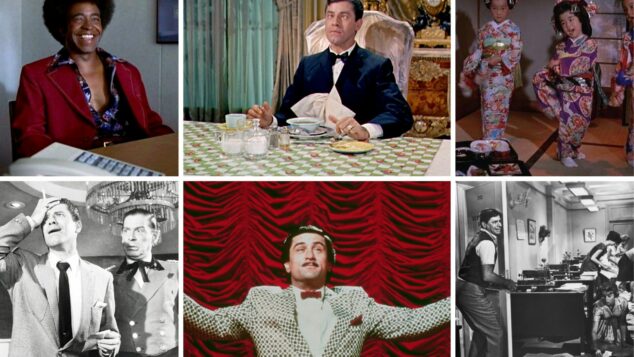 anemptytextlline
anemptytextlline -
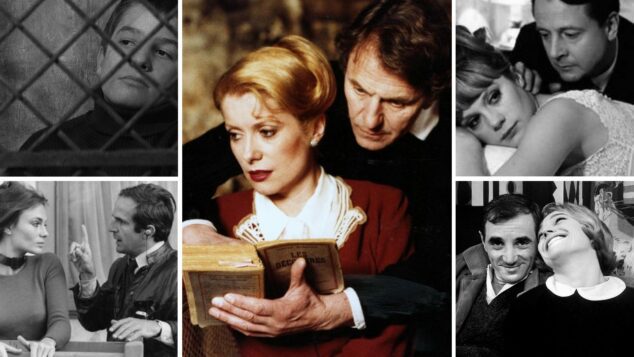 anemptytextlline
anemptytextlline -
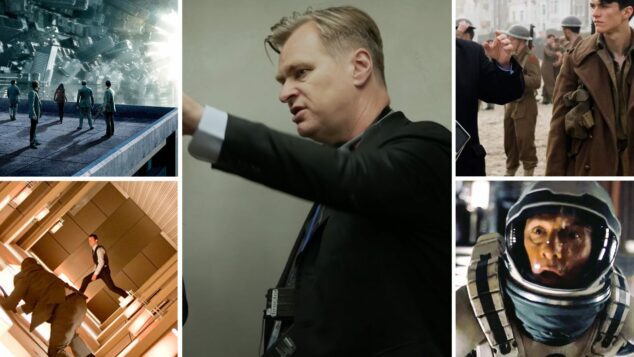 anemptytextlline
anemptytextlline -
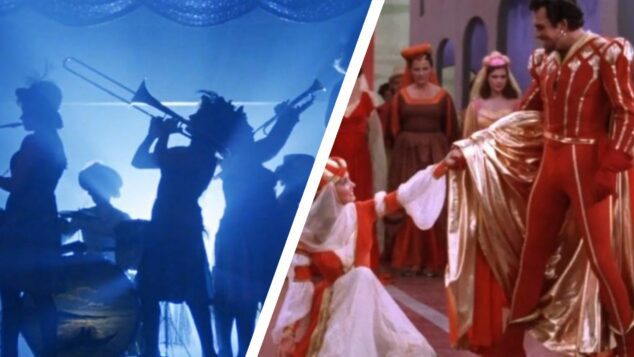 anemptytextlline
anemptytextlline -
 anemptytextlline
anemptytextlline -
 anemptytextlline
anemptytextlline -
 anemptytextlline
anemptytextlline -
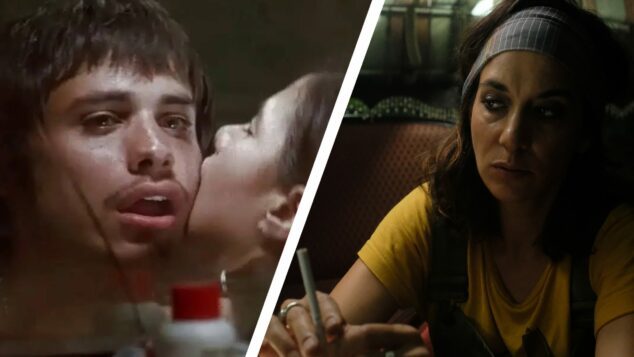 anemptytextlline
anemptytextlline -
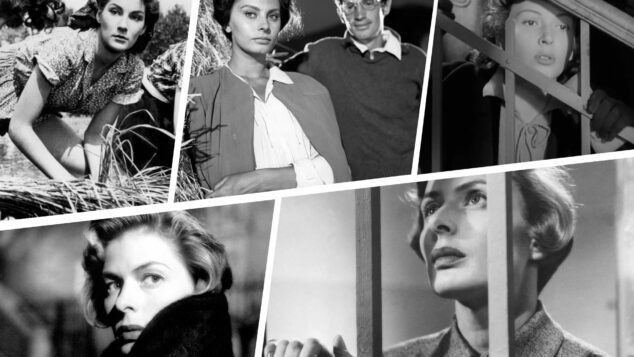 anemptytextlline
anemptytextlline -
 anemptytextlline
anemptytextlline



